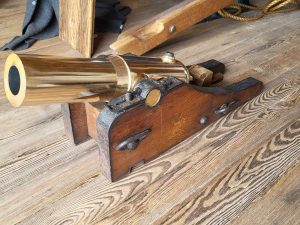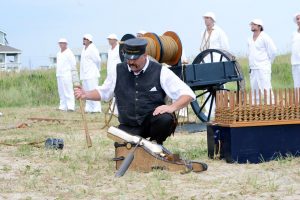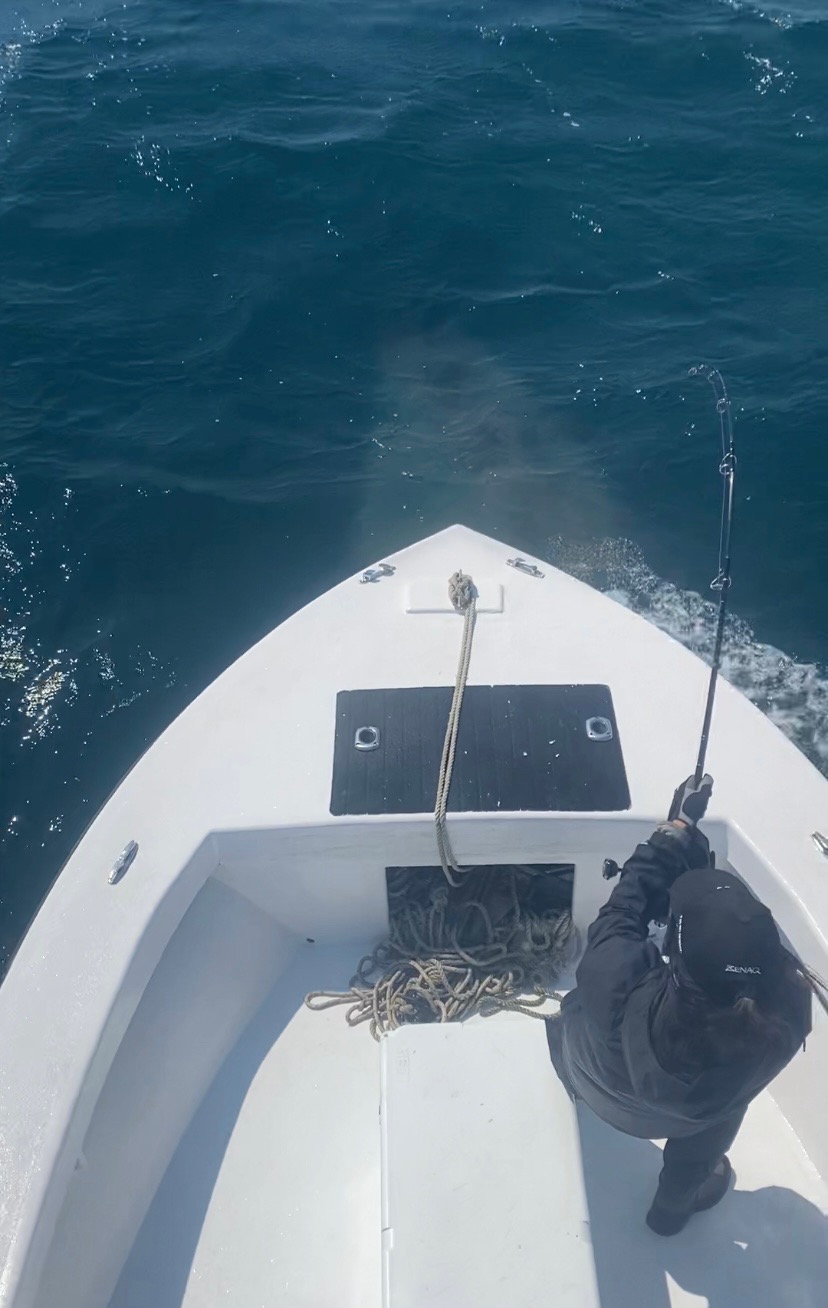Island History: A spotlight on stories from the Outer Banks’ Life-Saving Service

The Chicamacomico Life-Saving Station (CLSS) is celebrating its 150th anniversary this year, as one of the seven original Life-Saving Stations to be built in North Carolina in 1874.
As such, the Chicamacomico Life-Saving Station and Historic Site in Rodanthe will be sharing stories about the seven 1874 Outer Banks stations in the months ahead, leading up to the official October celebration of the United States Life-Saving Stations’ 150th anniversary in the state.
The following is the next of these Life-Saving Station feature articles to honor the #LegacyofLifeSaving, written by Jen Carlson for CLSS.
Practice Makes Perfect – A heroic rescue by the crew of the Chicamacomico Life-Saving Station
On February 5, 1882, the schooner Mary L. Vankirk found herself in a storm, sprung a leak, and ended up losing her sails. Quickly, she became water-logged and unmanageable.
The initial plan by the five-man crew was to seek refuge in Hatteras Inlet, but with fears rising that she would capsize at any moment, Captain Ballance decided to intentionally ground her.

She was spotted by the crew at the Chicamacomico Life-Savong Station as she was flying colors of distress. Initially, the life-saving crew left the station with the surfboat, but the heavy surf proved that the breeches buoy would be more effective.
Having to return to the station to swap equipment, the life-savers arrived on the scene about 15 minutes after the schooner struck the sandbar about half a mile north of the station.
The vessel was so close to shore that Keeper Little Banister “Capt. Ban” Midgett, III, was able to wade into the waist-deep water to cast a heaving-line to the crew huddled in the rigging. Waves were relentlessly beating the small schooner, so speed was of the essence.
As quickly as possible, the crew in the rigging hauled off the whip-line and hawser, so within minutes, the breeches buoy was sent out to retrieve the crew.

Within 15 minutes of the hawser being set up, all five of the crew were safely on shore and thankful to be on dry land.
The rescue was over so quickly, that by the time the Pea Island crew arrived to assist, the five survivors were already at the station.
A portion of the cargo as well as the effects of the Vankirk crew were retrieved during low tide, but the vessel itself was deemed a total loss. Captain Ballance later sent a thank you note to District Six Superintendent Joseph W. Etheridge, expressing his gratitude for the prompt assistance as well as recognizing not only the crew’s efficiency but also their care for in providing for the Vankirk’s crew’s needs.
All in a Day’s Work at the Nags Head Station
Sometimes it’s the long goal: On November 28, 1883, during a gale, the schooner Annie S. Carll ran aground about half a mile of the Nags Head station.
The high tide drove the schooner so far up the beach that the four-man crew was able to reach shore safely without assistance. The beach patrol found the vessel on his return trip, but the vessel’s captain and one other crewman beat him back to the station.
The life-saving crew immediately started towards the vessel and landed all the crew’s provisions and personal effects, in addition to lowering the sails and securing the vessel.
After determining it would take time to build a launch to get her back afloat, the Carll’s captain released his crew to return home to Virginia.
The schooner remained on the beach until the following spring when the station opened for the season, and the crew was able to get her once again safely afloat.
















